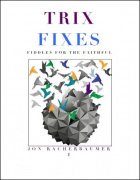Cards in Magic & Mentalism: page 59
Subtopics
Self-Working or Sleightless DIY Playing Cards Moves & Techniques ACAAN Stacks Marked Gaffed Rising & Levitating Manipulation & XCM Svengali Torn and Restored LinkingAuthors
Products
Three Good Deals
Ian Baxter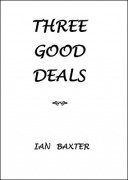
Growing tired of long, arduous Poker Deals that magicians love and audiences can loathe? All too often when a spectator remarks: "I wouldn't like to play cards with you!" the performer unleashes a twenty-minute Poker demonstration, often laced with countless sleights and bloated yarn about a shady Mexican gambler. The entertainment quotient is immediately stifled; it is all just 'too much.'
Looking to jettison these overbearing routines? Author Ian Baxter has put together some practical alternatives - three highly entertaining, well-paced Poker Deals in one exceptional manuscript. Easy, delightful...
20 Stunners with a Short Card
Ulysses Frederick Grant & T. A. Whitney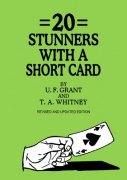
Twenty card miracles that you can do, updated and given fresh, new life for modern performers and audiences. This isn't your grandfather's manuscript of card tricks. If you have Grant's original Tricks with a Short Card, you're getting only half the story. This new, revised edition adds a whopping 350% more content.
If you're new to magic, the effects you're able to present will look like you've spent years of practice to polish them to perfection. And if you're a pro, you'll appreciate and enjoy T. A. Whitney's updated approach to these pasteboard miracles.
"Very clever. You need this...
Card in Envelope
Brick Tilley
A practical, easy to construct gimmick for accomplishing the effect of getting a selected card to vanish from the deck and be transported into a sealed envelope to be removed by a spectator.
You will receive a PDF and a video (see the digital shelf) explaining the process.
1st edition 2020, PDF + video 1min 9s.
Sandwich Mr. Daley?
Satish B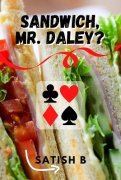
The four aces are openly removed and tossed onto the table. A card is chosen by the spectator and lost in the deck. The spectator chooses either the red or black aces to proceed. Let us assume he chose the red aces. The magician proclaims that as he waves the red aces over the deck, the chosen card will appear sandwiched between the aces. After a couple of attempts, nothing happens. Then the red aces turn into two jokers. When the deck is spread, the red aces are found reversed with the chosen card sandwiched between them. As a parting shot, the chosen card is found to be predicted on the back...
Decepticon Aces
Satish BThe ace assembly effect is a plot that has been done to death in the annals of card magic. The following is my version of an ace assembly effect with a twist at the end. The method is so simple that even a beginner can master and perform it.
Four aces are dealt face down next to each other. Three indifferent cards are added to each pile. The magician says that he will attempt to move all the aces from the different piles into one pile. After some mumbo jumbo, the aces have disappeared from three of the piles. When the fourth pile is turned over, to everyone's surprise, it contains ... the...
Avatar
Robert Walker & Jon RacherbaumerRobert Walker was a unicycling, high-school student. Looking five years younger than he was, he was a dyed-in-the-wool card guy tutored in Marlovian ways. He was also a precocious writer-creator, obsessed with false counts and packet tricks. He spent many hours "twisting the night away," taking voluminous notes, and developing new methods and approaches. His first mini-treatise dissected a marketed packet trick by Larry West ("Wild, Wild West") which he passed onto Jon Racherbaumer to publish. It became the second installment of the loose-leaf Avatar, printed on pink paper and unadorned by illustrations...
There and Back Again
Kent Gunn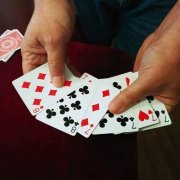
A story trick is one of the best effects one can do for lay people. See for example, Bill Malone's success with "Sam the Bellhop". Kent Gunn has altered the recipe of the story trick by adding a couple of card tricks in the middle of the story, which adds a new twist to the genre. Kent feels that it is is the best-received piece he has ever come up with. He also provides advice on how to come up with your own story, which ultimately is the best way to go.
("There and Back Again" was formerly known as "I Left My Heart in San Francisco".)
- There and Back Again
- Derek Delgaudio's Truffle Shuffle ...
All That Jazz
Jon Racherbaumer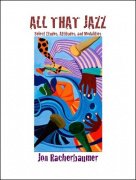
Jazz Aces was inauspiciously introduced to the magic world in 1971 when Peter Kane published Another Card Session. It was a fortuitous event because it appeared about the same time the Elmsley Count was gaining favor with magicians from coast to coast. Like weeds in an open field, packet tricks were also popping up everywhere. Furthermore, Kane's routine clarified the transposition aspects of basic Ace Assemblies. Using only 8 principal "players" (cards), his action procedure was simple and direct. Best of all, the final transposition was squeaky clean. As a result it did not take long for Jazz...
Visible Merger
Wesley James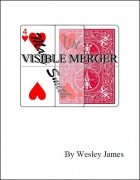
Wesley James has long been associated with innovative ideas in card magic. His contributions are too numerous to list. They include the Physical Merger plot, best known as "Forgery," and "Anniversary Waltz." Wesley has been holding out on the magic community since the early 1970s. There has been a more advanced, more visually impressive version of the Merger plot, the Visible Merger plot.
In this monograph, for the first time, Wesley is releasing his developments on the Visible Merger plot. You probably won't perform these versions every time you perform his Physical Merger plot - Visible...
Teleportation
Mario Tarasini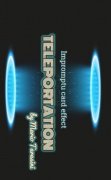
The spectator picks a card and signs it. Magician splits the deck in two piles. Then he puts the card in one pile and it magically appears in the other.
- completely impromptu
- works with a borrowed deck
- no sticky stuff
- no magnets
- no threads
- works even with a card from a different deck
- any deck, a sharpie and your hands
1st edition 2020, length 6:43.
Card Tricks That Work
Tom Sellers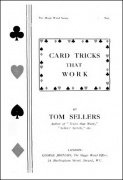
From the Foreword:
Sometimes the most simple tricks are the most effective. The card tricks here described are all simple in principle. I trust you will find them entertaining and effective.
- Foreword
- A New Jumping Card Trick
- Steps
- A Card From Pocket Trick
- Card Divination
- On The Top
- A Trick With The Si Stebbins Pack
- The Persistent Joker
- An Excellent Card Change
- The Laughable Rising Card
- Lift A Few
- Unique Card Prediction
- Finding A Selected Card At Any Number Called For
- A Two Person Telepathy Effect
- Named Card And Slates
- The Paired Card
- A Practical Prediction
- Unique Control...
Card Magic for the Enthusiast
Paul Hallas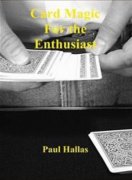
"This is loaded with stuff that is both simple to do and deceptive (not to mention entertaining). Would I recommend this book? You betcha!" - Jim Canaday, The Magic Portal"There's way more here than simply 28 tricks between two covers. There's an assemblage of original thoughts and methods from a consummate professional you can buy for a trifle." - Rick Carruth, The Magic Roadshow.
"In addition to killer tricks, Paul also provides his innovations and handlings of useful sleights, including Pinky Ovette, Center Double Control, and Simple Double Card Control. His essay Thoughts on Multiple...
Three Extras
Ian Baxter
Francis Carlyle and Faucett Ross get coverage in this latest manuscript from Ian Baxter. In a tribute to both of these giants from the past, Baxter examines Carlyle's 'The Card That Finds Itself' with a new and novel approach, while the Ross classic 'Twice Turned' gets a dusting off that adds value-plus to this popular effect from the Vernon Chronicles. The third entry is Baxter's technique for the Top Palm, unbelievably fast, straightforward and appreciably easier than most other methods in print.
1st edition 2020, PDF 9 pages.
Mr. Bones: Miracle Thought of Card
Brick Tilley
A card is merely thought of by a spectator. The performer writes a prediction on a card and pockets it. The spectator is asked to remove his thought of card from the deck. When the performer's prediction is read aloud by another spectator it is found to match the spectator's card. At no time does the spectator state or reveal his card until after the spectator's thought of card has been read aloud.
This is based on a Harold Taylor idea. The clever method will put a big smile on your face.
1st edition 2020, PDF 4 pages, video 1 min 37 s.
May The Flop Be With You
Jon Racherbaumer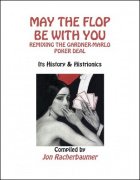
Remixing the Gardner-Marlo poker deal - its history and histrionics.
- Introduction
- How To Study This Manuscript
- An Effective Poker Deal / Jean Hugard
- Gardner-Marlo Poker Deal / Martin Gardner, Edward Marlo
- The Surprised Gambler / Martin Gardner
- Can You Deal A Good Poker Hand? / Jean Hugard
- Meyer Poker Deal / Orville Meyer
- The Lorayne Poker Deal / Harry Lorayne
- Of Course I Can Deal A Good Poker Hand! / Edward Marlo
- Solomon Meets Gardner-Marlo / Dave Solomon
- The Ultimate Gardner-Marlo/ Steve Mayhew, Jack Carpenter
- Marlo/Gardner/Britland Poker Deal
- Riverboat Poker / John Bannon
- Addendum: Duts / Edward Marlo
1st edition 2020, PDF 50 pages....
Moment's Notice Live 3
Cameron Francis
This third installment of the popular Moment's Notice Live series finds Cameron remixing, remastering, fixing, twisting, turning, and otherwise improving all of the effects from the original Moment's Notice 3 ebook. Featuring six super commercial, totally impromptu card routines that you'll want to add to your repertoire right away.
Effects:
Sympathy – The four Queens twist and collect in the cleanest manner possible.
Wilder – A highly visual two phase Wild Card routine.
Indie – Three incorrect predictions turn into three mates.
Toasted – A clean and extremely direct double sandwich routine. ...
The Erdnase Notebook
S. W. Erdnase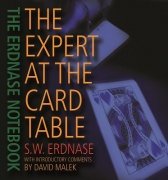
This is the workers edition of Erdnase's The Expert at the Card Table. Produced as a letter sized three ring binder so that one can insert note pages anywhere one wishes to take notes, printed in large font (16pt) on heavy coated durable paper, so that it can be read from a distance.
David Malek, who came up with this specially designed format, explains in his introduction:
... I thought of an oversized edition, one that would lie flat on the table and be big enough to read from a foot or more away. The advantage of size would also facilitate working through the book with cards in hand, while having your eyes on the text and...
Sunken
Jon Racherbaumer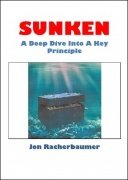
A deep dive into a key principle - the sunken key card.
- So It Begins ...
- Adding the Pips / Larsen - Wright
- Automatic Location / Oscar Weigle Jr.
- The Three Pile Trick / C. W. Jones
- The Twenty-Sixth Location
- The Triple Discovery / Charlie Miller - Jack McMillen
- Watching the Pitchman / Charlton Chute
- Improved Twenty-Sixth Location
- Middle Maze / Bruce Elliott
- The Twenty-Sixth Card Location - Using a Corner Short / George G. Kaplan
- Koran's Miracle Card Stab / Al Koran
- A New Use for a One Dollar Bill / John Henry Grossman
- Buried Treasure / Alex Elmsley
- Shadowed / Alex Elmsley
- S-D Location / Dave Solomon - Steve Draun
- S-D Plus / Simon Aronson
- An Exploration...
Card to Paper Wallet
Hans Trixer & Wolfgang Riebe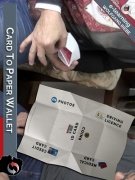
There are so many versions of the Card in Wallet - yet none as unique as this one. A freely signed and selected card appears in a paper wallet that happens to be a sheet of paper openly folded into the shape of a wallet right in front of the spectator.
Forget leather wallets. Forget trick wallets. No duplicates, just plain powerful magic with a regular deck and a sheet of A4/US-letter paper that is folded into a wallet. The 'simplicity' of the wallet and the fact that the spectator checks everything themselves makes this effect mind-blowing.
Original concept by Hans Trixer and developed...
Paradoxes
Paul A. Lelekis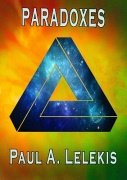
Three beautiful routines, complete with 5 videos, an intro discussing paradoxes, as well as numerous examples, and plenty of paradoxical pictures and phrasings for your enjoyment.
When we, as magicians perform, we do things that are unlikely, improbable, or perhaps even artistic. When we perform paradoxes, we create events that are not just unlikely to occur ... but are, instead, absolutely impossible!
These routines are seriously strong closers (or can be used as powerful openers) and will fool even the most knowledgeable of magicians ... if they are not already familiar with them. Paul...
1 Dollar Card Through Window
Ralf (Fairmagic) Rudolph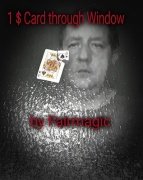
A playing card missing a corner melts through a window glass pane.
Once the card has melted through the glass the spectator can touch the glass. This method is very quick and cheap to make, about $1, and thus the name of the trick. Works with any glass pane that is not too thick.
[Note: The $1 cost statement assumes you have common supplies available when it comes to gaffing cards, such as double sided tape, invisible thread, etc. If you do not have these available then it will cost you more, because you will likely have to purchase more than you actually need for this one gimmick. Also keep in mind that most will incur shipping costs to stock up on these supplies.]
1st edition 2020, length 21 min 48 s....
Bammo Brain Bamboozler: Bammo Gaffus Maximus Addendum 1
Bob Farmer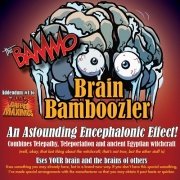
An astounding encephalonic effect. Combines telepathy, teleportation and ancient Egyptian witchcraft (well, okay, that last thing about the witchcraft, that's not true, but the other stuff is). Officially this is the first addendum to Bammo Gaffus Maximus. Uses your brain and the brains of others. Two spectators think of cards. The first spectator's card vanishes from the deck. The magician removes one face-down card from his pocket and places it on the table. For the first time, the spectator names his card - the magician turns over the card on the table - it is the first spectator's card.
But now for the...
Smooth Elevator
Ian Baxter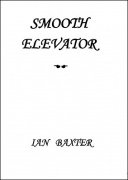
Edward Marlo originated The Elevator Cards back in 1948 and now, Ian Baxter's latest streamlined offering is available. Short, snappy and to the point, with several strong magical moments. This is totally impromptu, practically sleight free and is sure to please the most discriminating card worker. This is one of Baxter's best!
1st edition 2020, PDF 7 pages.
